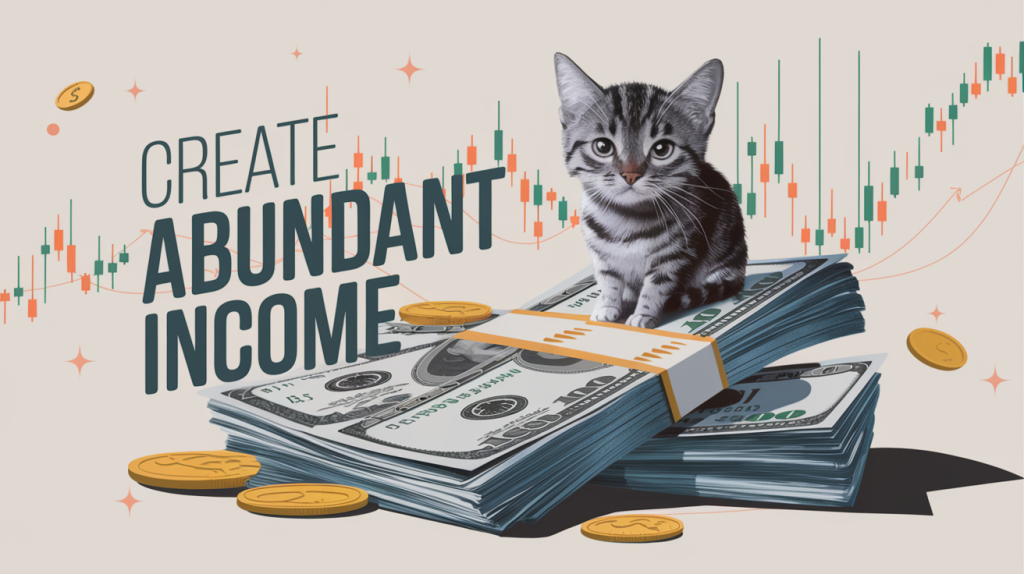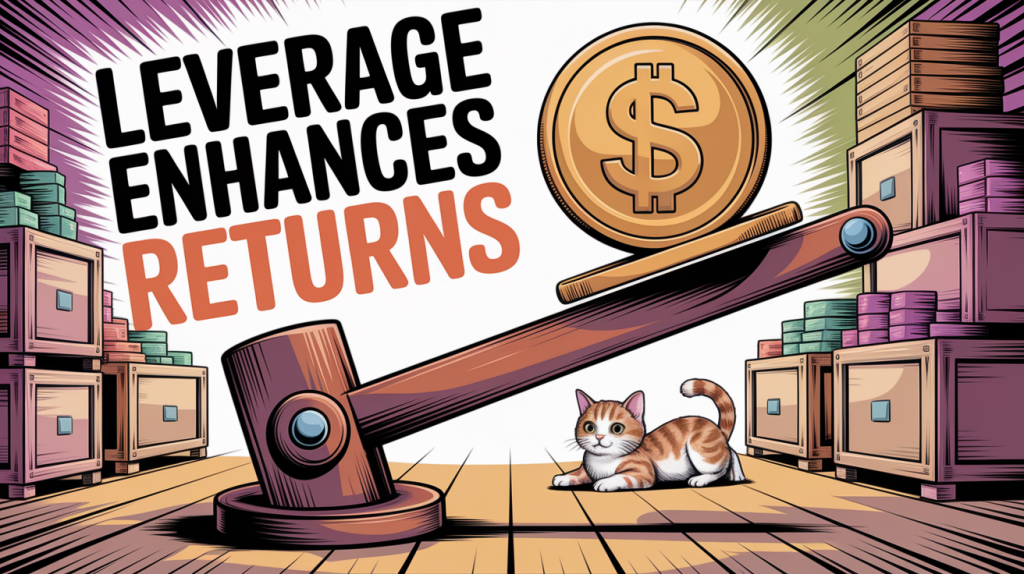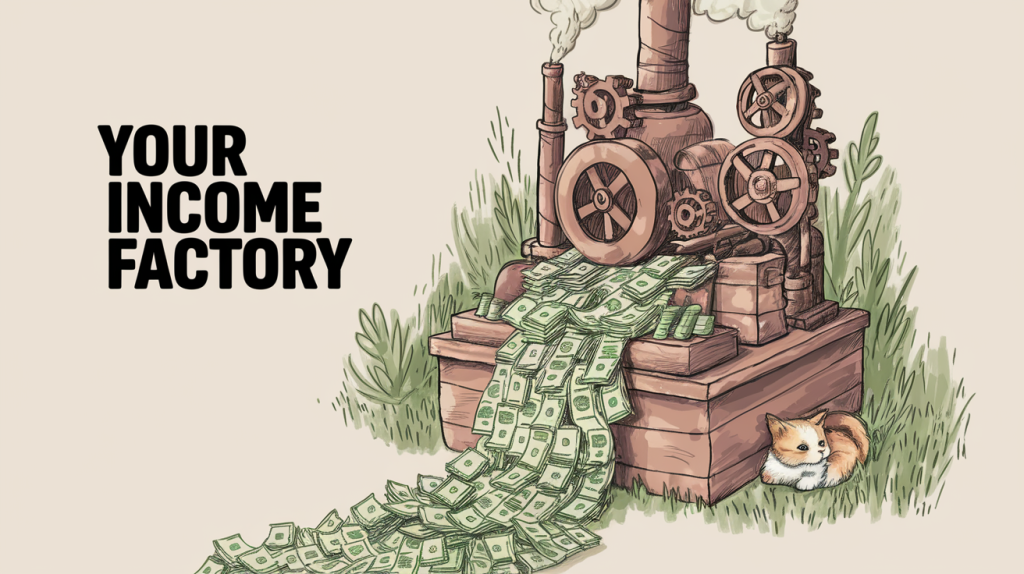
Get your own copy of the Income Factoy book
The idea of earning steady, reliable income from investments is incredibly appealing. After all, who wouldn’t want a strategy that keeps the cash flowing even during uncertain times? Imagine an approach where your investments work like a factory, steadily producing cash flow even in volatile markets. This is the essence of an Income Factory—a concept popularized by Steven Bavaria.
Designed to help investors grow wealth systematically while enjoying steady payouts, the Income Factory emphasizes high-yield investments and disciplined reinvestment. It’s not just about receiving income; it’s about turning that income into a compounding growth machine. In this expanded article, we’ll take a closer look at how this strategy works, explore the various assets that fuel it, and provide practical steps for implementation.
Please note that one of our Founder’s Club portfolios is based on Income Factory concept.
The Concept of an Income Factory
Investors often focus on capital appreciation—buying low and selling high—as the ultimate goal. However, the Income Factory shifts the paradigm by prioritizing consistent income generation. This innovative strategy redefines success in investing by emphasizing cash flow reliability over price fluctuations. The foundation of the Income Factory lies in building a portfolio that works tirelessly to produce returns regardless of market conditions.
What Is an Income Factory?
An Income Factory is a strategy centered around generating consistent and sustainable income from your investments. Unlike traditional approaches that prioritize capital appreciation, this method focuses on maximizing cash flow through high-yield investments. The goal is to create a portfolio that produces steady income, regardless of market conditions, while reinvesting payouts to compound returns over time. It embodies the philosophy that a steady stream of income can build wealth as effectively—if not more so—than chasing stock price gains.
Key Features of an Income Factory
- Income-Centric Philosophy: Prioritizing cash flow over price appreciation.
- High-Yield Investments: Utilizing closed-end funds (CEFs), exchange-traded funds (ETFs), real estate investment trusts (REITs), and other income-generating securities.
- Reinvestment for Growth: Leveraging the power of compounding by reinvesting dividends and distributions.
- Resilience in Volatile Markets: A design that ensures the portfolio generates income irrespective of market fluctuations.
Each of these features contributes to the Income Factory’s ability to weather market challenges and maintain a steady financial output, making it a versatile tool for investors seeking both income and stability.
How Does an Income Factory Work?
The Income Factory concept isn’t just about picking high-yield investments—it’s about creating a disciplined system that turns cash flow into a growth engine. It’s like setting up a business that reinvests its profits to expand operations, except in this case, the profits are dividends and distributions that fuel future growth. Here’s a comprehensive guide to assembling and managing your Income Factory.
Building the Factory: Asset Selection
To construct an Income Factory, you need a diverse mix of high-yield investments. Diversification is the key to ensuring stability and minimizing risk. Here are the primary asset types that serve as the factory’s machinery:
- Closed-End Funds (CEFs):
- Examples: Eaton Vance Tax-Managed Global Diversified Equity Income Fund (EXG), Nuveen Real Asset Income and Growth Fund (JRI). or Bank Loan Funds
- Benefits: High yields and often traded at a discount to net asset value (NAV).
- Why CEFs? These funds provide access to income-focused strategies managed by professionals, making them ideal for achieving yield targets.
- Exchange-Traded Funds (ETFs):
- Examples: Global X SuperDividend ETF (SDIV), JPMorgan Equity Premium Income ETF (JEPI).
- Benefits: Low expense ratios, tax efficiency, and diversified exposure to high-yield securities.
- Why ETFs? ETFs offer liquidity and transparency, making them a great addition to an Income Factory for both beginners and experienced investors.
- Real Estate Investment Trusts (REITs):
- Examples: Realty Income Corporation (O), American Tower Corporation (AMT).
- Benefits: Reliable income streams tied to real estate assets.
- Why REITs? These trusts enable investors to tap into the lucrative real estate market without owning physical properties.
- Business Development Companies (BDCs):
- Examples: Ares Capital Corporation (ARCC), Main Street Capital Corporation (MAIN).
- Benefits: High dividend yields derived from lending to small and medium-sized businesses.
- Why BDCs? They provide exposure to private markets and generate strong returns through consistent interest income.
- Covered Call ETFs:
- Examples: Global X Nasdaq 100 Covered Call ETF (QYLD), Neos S&P 500(R) High Income ETF (SPYI)
- Benefits: Income from option premiums in addition to dividends.
- Why Covered Calls? They boost income by selling options, making them particularly effective in sideways markets.
- Leveraged Funds:
- Examples: PIMCO Dynamic Income Fund (PDI), BlackRock Multi-Sector Income Trust (BIT).
- Benefits: Enhanced income potential using borrowed capital.
- Why Leveraged Funds? These funds amplify returns but require careful management due to higher risk.
Reinvestment and Compounding
The cornerstone of an Income Factory is reinvestment. By reinvesting dividends and distributions, you can:
- Accelerate Growth: Purchase additional shares to increase future payouts.
- Expand Income Streams: Boost the portfolio’s overall cash flow over time.
- Create a Compounding Effect: Over time, reinvesting income significantly amplifies total returns, turning modest yields into powerful growth engines.
Balancing Growth and Stability
While income generation is the primary goal, maintaining portfolio stability is critical. Diversify across asset classes, sectors, and geographies to reduce risk. Additionally, periodically reassess your portfolio to ensure it aligns with your financial objectives and risk tolerance.
Benefits of the Income Factory Approach
An Income Factory isn’t just about generating income; it’s about creating a strategy that supports financial goals over the long term. This section explores the advantages of this approach and how it can enhance your financial resilience. By focusing on steady cash flow, the Income Factory reduces dependence on market timing and provides a clear path to financial stability.
Predictable Cash Flow
The Income Factory provides steady payouts, offering financial flexibility. This cash flow can be reinvested, used for lifestyle expenses, or allocated toward other investment opportunities. Investors no longer have to depend on market movements to achieve their financial goals.
Resilience in Market Downturns
High-yield investments are less reliant on market performance, making this strategy more stable during economic downturns. Income continues to flow even when asset prices fluctuate, ensuring that your financial plan remains on track.
Accelerated Wealth Building
Reinvestment creates a powerful compounding effect, increasing both income and the portfolio’s value over time. This compounding effect is the driving force behind the Income Factory’s ability to turn modest yields into significant long-term gains.
Potential Drawbacks and Risks
No investment strategy is without risks, and the Income Factory is no exception. In this section, we’ll cover the potential pitfalls and challenges that investors should be aware of when adopting this approach. Understanding these risks ensures you can mitigate them effectively.
Volatility of High-Yield Assets
Investments like CEFs and leveraged funds can experience price volatility, requiring a long-term perspective. Being prepared for fluctuations in portfolio value is essential for maintaining confidence in the strategy.
Interest Rate Sensitivity
High-yield investments may face pressure during rising interest rate environments, as higher rates can reduce the attractiveness of income-focused securities. Monitoring interest rate trends and adjusting allocations can help manage this risk.
Risk of Over-Concentration
Diversification is key to avoiding excessive exposure to any single sector or asset type. Ensure your portfolio is balanced to withstand sector-specific downturns without impacting overall performance.
How to Start Your Own Income Factory
Starting an Income Factory is easier than you might think, but success depends on careful planning and execution. With the right approach, you can create a portfolio that generates reliable income and builds wealth over time. Here’s a step-by-step guide to building your own income-generating portfolio.
Choosing the Right Investments
- Evaluate yield sustainability, expense ratios, and historical performance.
- Look for discounts to NAV when selecting CEFs.
- Prioritize assets with consistent payout histories and low correlation to each other.
Creating a Reinvestment Plan
Set up automatic reinvestments or manually allocate payouts to under-allocated or high-yield positions. A disciplined reinvestment plan ensures that income is consistently used to grow your portfolio.
Monitoring and Adjusting Your Portfolio
- Regularly review asset performance and reallocate to maintain balance.
- Adapt to changing market conditions without losing sight of the income goal.
- Continuously educate yourself about new investment opportunities to refine your strategy.
Conclusion
The Income Factory approach, championed by Steven Bavaria, offers a compelling way to generate steady income while building wealth over time. By focusing on high-yield investments, reinvesting payouts, and diversifying intelligently, you can create a portfolio that not only weathers market turbulence but thrives. Start building your Income Factory today, and watch your investments transform into a powerful cash flow machine. With careful planning and disciplined execution, this strategy can become the cornerstone of your financial independence.

Shailesh Kumar, MBA is the founder of Astute Investor’s Calculus, where he shares high-conviction small-cap value ideas, stock reports, and investing strategies.
His work has been featured in the New York Times and profiled on Wikipedia. He previously ran Value Stock Guide, one of the earliest value investing platforms online.
Subscribe to the Inner Circle to access premium stock reports and strategy insights.
Featured in:



